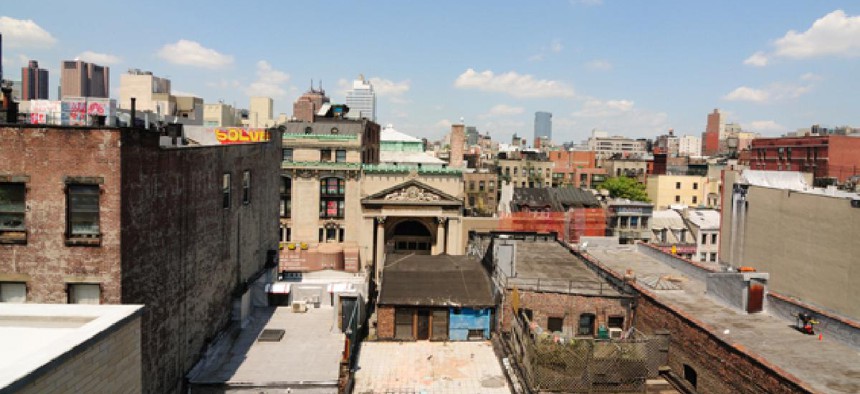Setting a new threshold for poverty

Late last year the United Ways in New York state released the ALICE Report. The report looks at which and how many New Yorkers are struggling financially, not just against the federal poverty level, which is woefully out of date, but against a real survival budget. The report finds that 44 percent of our households have incomes that fall short of that minimal budget.
Who is ALICE? You already know ALICE. We see ALICE every day – hard workers who keep New York’s economy running, but who aren’t always sure that they can put food on their tables. Each day ALICE stands at cash registers, fixes our cars, serves us in restaurants and retail stores, and cares for our children and elderly.

ALICE stands for Asset Limited, Income Constrained, Employed. While 15 percent of our households are below the FPL, and eligible for many services, almost double that, 29 percent, are working hard, often at more than one job, yet still struggle to make ends meet. That is 2.1 million households that have incomes above the FPL but below the ALICE threshold. Their wages don’t sustain them and their families. They are constantly one small emergency away from a major financial crisis and they deserve more investment from private and government sources, to help secure their well-being.
United Way’s Alice project developed a Household Survival Budget using conservative estimates of monthly expenses for housing, child care, food, transportation, health care and taxes. To meet the ALICE threshold for survival, a four-person household (2 adults, 1 infant, 1 preschooler), needs an annual income of $62,472, or $31.24 per hour. A single person needs income of $21,540, or $10.77 per hour. Cost of living is calculated separately for each county in the state, as rates vary widely in New York. ALICE adds a statewide perspective to the understanding of poverty we have from important previous efforts like the Self-Sufficency Standard, which examines the same issues for New York City.
The report tells us more about ALICE individuals, such as where they live, the structure of their family, and what they do for work. The report shows us that ALICE lives in every part of our state., from our biggest cities to our most rural areas. Our big cities have the highest incidence of households below the ALICE threshold, but counties like St. Lawrence and Tompkins also contain some of the highest percentage of ALICE households in the state. The report includes information down to the level of most cities and towns.
The report also tells us whether ALICE is a young person struggling in their first job, a family choosing between paying food or rent, or an elderly person on a fixed income. It will not surprise many that the report finds women, people with lower levels of education, persons with a disability, the LGBT community, immigrants and veterans are at particular risk of living in ALICE households.
There is information on the types of jobs where ALICE works. Fifty-five percent of all jobs in NYS pay less than $20 per hour or $40,000 annually for full time work. These lower paying jobs have been growing faster than high paying jobs.
The report highlights and quantifies what many have noted anecdotally, that the changing reality of jobs and wages has left many individuals and families in precarious situations.
The United Ways produced the ALICE report so we can better understand changing needs, and work together on solutions. We hope that government, foundations and other funders and policy makers will use the report as a reference tool in setting eligibility levels for programs. For too long we have accepted setting eligibility for many assistance programs at arbitrary and unrealistically low levels. We’ve created the ‘benefits cliff’, where the sudden loss of assistance like food and child care hits people just as they are starting to pull out of poverty, undermining the effectiveness of our public investment.
We need to understand poverty in a broader context than we have been discussing, and target resources to help ALICE. By investing in ALICE, we are investing in ourselves. Stability in the lives of workers is positive for the companies that employ them and the overall economy. ALICE is working hard for us, and we need to help ALICE become more financially secure.
Reg Foster is the President and CEO of United Way of New York State.
